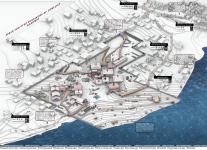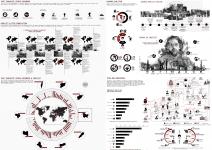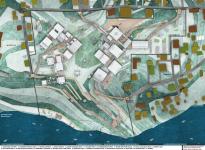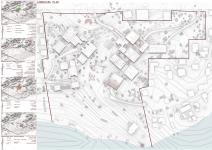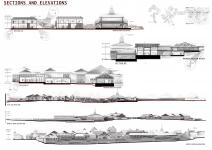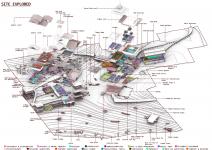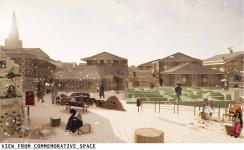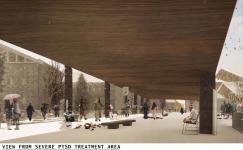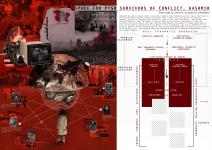-From the verge of conflict to space of consonance.
Throughout the course of world history, Wars and Post-traumatic stress disorder always has a direct relationship as they are influenced by multiple external factors which forms a complex web in that region, thus directly or indirectly affecting an Individual milieu internally in terms of PTSD. Today, unfortunately, they are many, which are raging around the globe, for example in Syria and Somali Palestine, Mexico, Iraq Kashmir etc. which are affected by Postwar in terms of PTSD. How is Post-war chaos producing PTSD managed in an Urban context which in itself has a Traumatic Landscape directly or indirectly affect an Individual?. What will be imprinted on to the residents’ memory in terms of Trauma and what will pass into oblivion? Understanding the architect’s deep influence on the shaping of life, these questions swirl in my mind and thus raising the indicator of responsibility in Post-traumatic Urbanism.
The site selected is in Kashmir, Baramulla, Sopore where 26% of the population suffers from PTSD, largest in India. Different survivors have different Traumatic memory (social-political ethnic-religious), thus forming a complex web of mental conflict over one another. The project aims to bind them together in form of collective memory in an urban space without having any conflict over their personal traumatic memory. The multiple sets of people suffering from PTSD are further classified based on their collective trauma i.e Massacre, Torture, Half widow, Transitional Youth and Armed Forces combat Survivors. The survivors are thus further classified based on Severe Individual PTSD (Rehabilitation & Treatment) and Urbanism PTSD (Treatment) inducing Cognitive therapy in its built block and Prolonged Exposure therapy in its Landscape based on their trauma categorization. The user as an internal factor is dominating over the external factors i.e. Landscape which is vice versa in its context. Thus the order is created as an equilibrium over a complex web of mental conflict created to a specific user therapeutic needs and trauma experience in order to not affect them mentally when they get back to their Traumatic Urbanism.
2020
2020
SITE AREA: 20 ACRE
BUILDING BLOCKS:
1. POST TRAUMATIC SURVIVORS BLOCK. 2. MENTAL HEALTH BLOCK. 3. ADMINISTRATION BLOCK 4. TRANSITIONAL YOUTH BLOCK 5. WOMEN’S BLOCK 6. HALF WIDOW BLOCK 7. MASSACRE SURVIVORS BLOCK 8. TORTURE SUVIVOR BLOCK 9. COMMUNITY PHYSIOTHERAPY BLOCK 10. SURVIVORS PHYSIOTHERAPY BLOCK 11. CAFE & PEER MENTORING
LANDSCAPE:
12. COURTYARD & WAITING 13.COMMUNITY NEUTRAL SPACE 14. TRAUMA CONFRONT 15. SECRET GARDEN 16. LIBRARY & READING SPACE 17. CHILDREN’ SPACE 18. COMMEMORATIVE SPACE 19. MOUND VIEW POINT SOCIAL 20. SOCIAL & CULTURAL SPACE 21. WOMEN‘S AREA
22. HALF WIDOW SPACE 23.OPEN COGNITIVE THERAPYT 24. EMERGENCY TREATMENT 25. WALKING TRAILS (VIEW POINTS) 26. RIVER EDGE STEPS 27.GARDEN OF CONTEMPLATION
INDIVIDUAL ENTRY - - HAARIS ZAFAR KHAN / FIFTH YEAR STUDENT
SUPERVISOR: AR IQTEDAR ALAM

